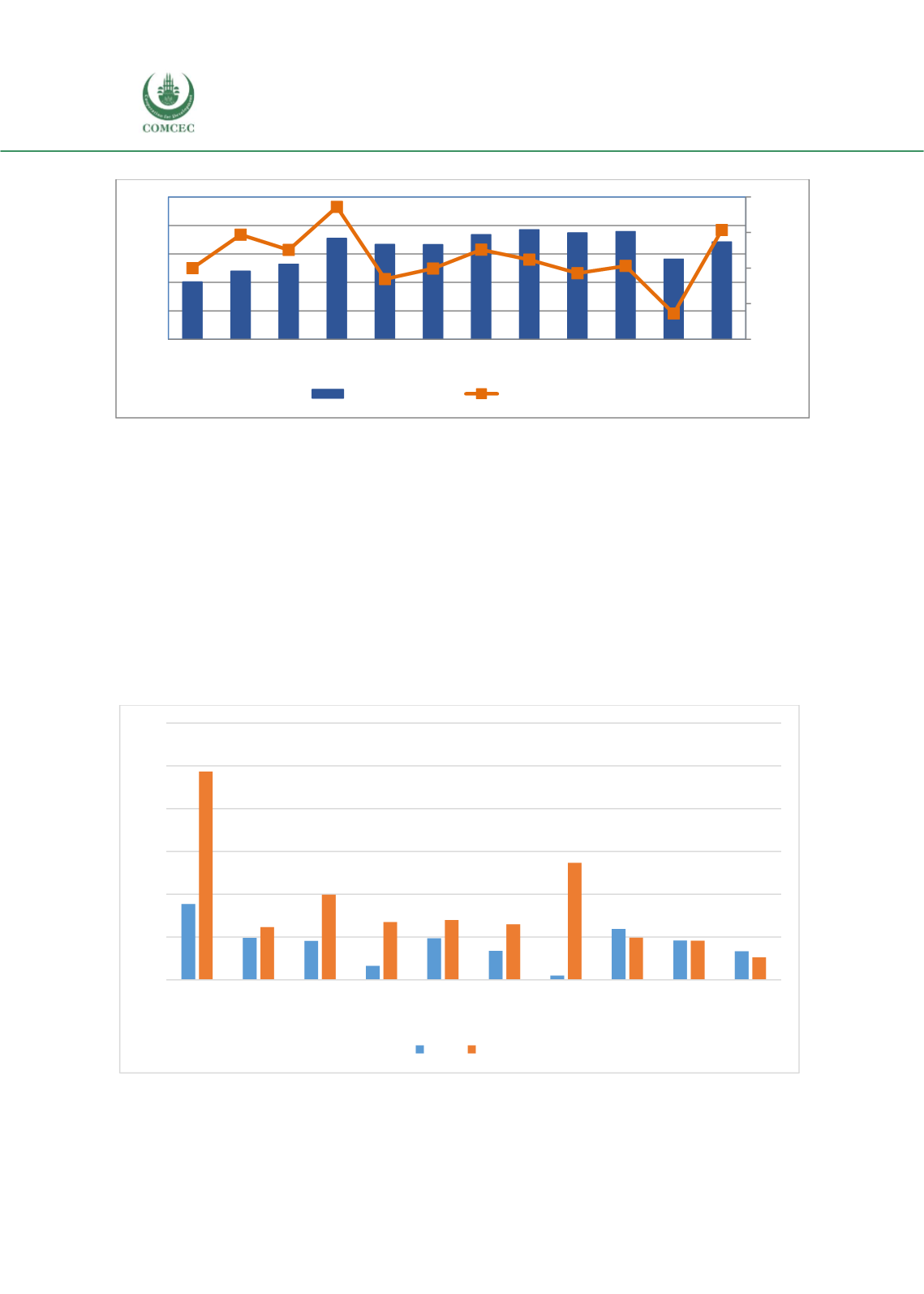

Analysis of Agri-Food Trade Structures
To Promote Agri-Food Trade Networks
In the Islamic Countries
114
Figure 60: Trends in Fish Products Imports of Tunisia, 2005-2016, Million USD
Source: UN Comtrade retrieved through WITS.
On the import side, the ten leading products are (in order): wheat and meslin; oil seeds and
oleaginous fruits; maize; animal feed; tobacco; cork and wood; other cereals; soya bean oil;
sugar; and sugar preparations. Together, these products accounted for 69% of imports on
average over the 2014-2016 period, which indicates that Tunisia’s import bundlewas somewhat
more diversified than its export bundle. Moreover, the collection of products suggests that, in
general, the country’s agricultural trade is characterized by complementarity of export and
import flows, rather than intra-industry trade in similar products
. Figure 61shows the evolution
of imports of these products over the last decade. The leading product, wheat, shows significant
swings in total import value year-on-year, but it is always the predominant import product.
Other categories generally see growth over time, but fluctuation year-on-year is similarly
significant.
Figure 61: Value of Tunisia’s Main Imports, by Disaggregated Product, 2005-2016, Million USD
Source: UN Comtrade
-40%
-20%
0%
20%
40%
0
20
40
60
80
100
2005 2006 2007 2008 2009 2010 2011 2012 2013 2014 2015 2016
Fish Products
Growth Rate (%)
0
100
200
300
400
500
600
Wheat Other
cereals
Maize Sugar Animal
feed
Tobacco Oil seeds Cork and
wood
Soya bean
oil
Sugar
products
2005 2016
















